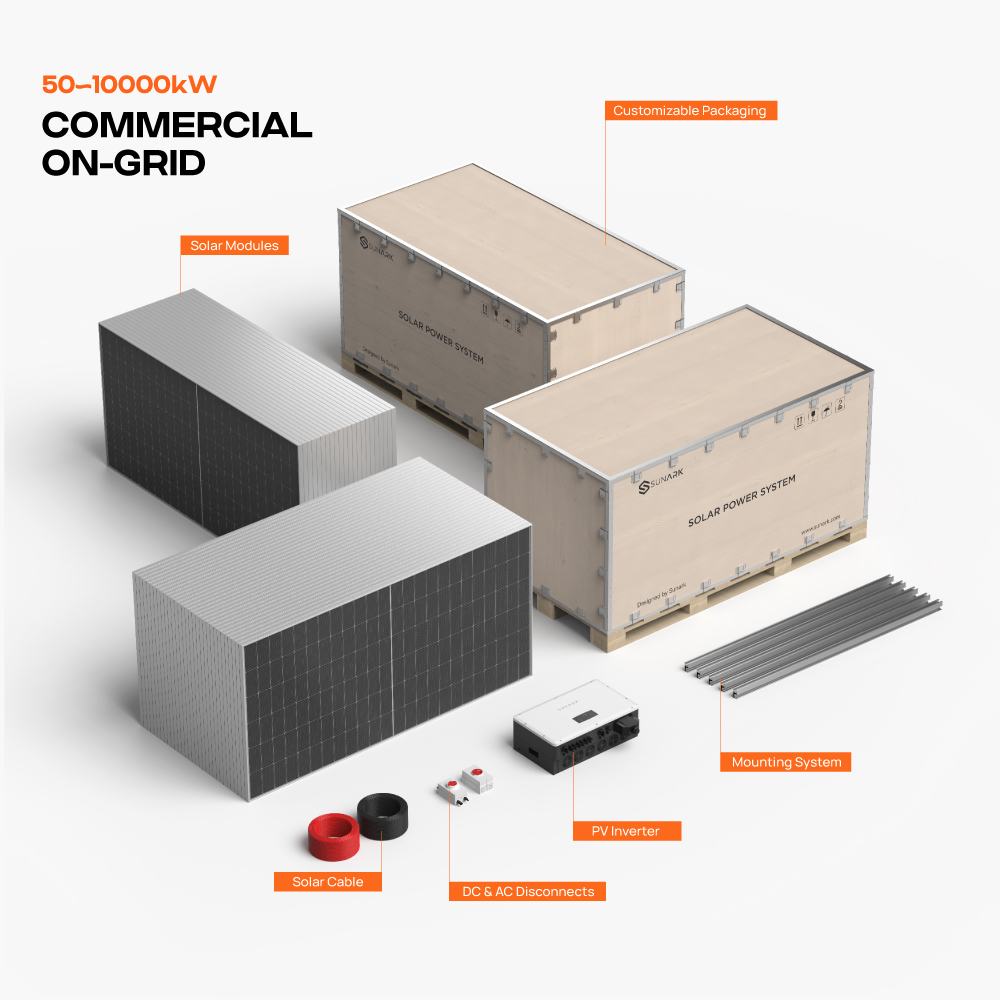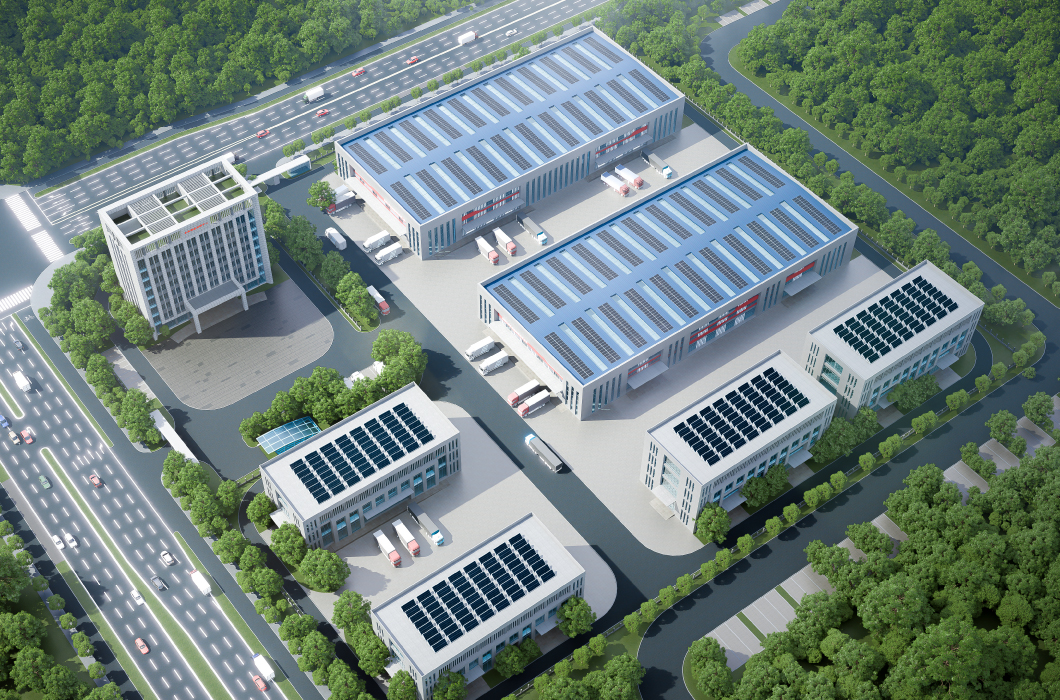It's important to note that the specific components and configuration of a commercial on-grid solar system may vary depending on various factors, including the site conditions, electricity requirements, and local.
Model:
SE50-10000KW-ONPV Panel:
550WInverter Power:
50-125KWAccessories:
Cable,Connector,PV toolsMountings Rack:
CustomizedApplication:
Roof and GroundOEM:
Supported
A commercial solar plant refers to a large-scale solar energy project developed for commercial purposes. It typically involves the installation of a significant number of solar panels or solar modules to generate electricity on a commercial scale. These solar plants are designed to supply electricity to commercial and industrial entities, as well as feed electricity into the electrical grid.
Here are some key points about commercial solar plants:
Size: Commercial solar plants are much larger than typical residential solar installations. They often cover extensive land areas and can range from a few hundred kilowatts to several megawatts or even gigawatts in capacity.
Grid Connection: Commercial solar plants are grid-connected, meaning they are linked to the existing electrical grid infrastructure. The electricity generated by the solar plant can be fed into the grid and supplied to nearby consumers, such as businesses, industries, or residential areas.
Power Purchase Agreements (PPAs): Some commercial solar plants operate under power purchase agreements. In a PPA, an entity, such as a utility company or a commercial consumer, enters into a contract with the solar plant owner to purchase the electricity generated by the solar plant at a predetermined price or rate over an agreed-upon period.
Remote Solar Plants: In addition to grid-connected commercial solar plants, there are also remote solar plants that are built in locations where there is no access to a utility grid. These off-grid solar plants may use energy storage systems, such as batteries, to store excess electricity for later use when the sun is not shining.
Benefits: Commercial solar plants offer several benefits. They provide clean and renewable energy, reduce greenhouse gas emissions, offer long-term cost savings compared to traditional fossil fuel-based energy sources, and contribute to energy independence.
Commercial solar plants play a crucial role in the transition toward a more sustainable energy future by facilitating the adoption of renewable energy at a larger scale and contributing to the reduction of carbon.

A commercial on-grid solar system typically includes the following components:
Solar Panels: These are the main components that convert sunlight into electricity. They are usually installed on the rooftop or an open area and consist of multiple photovoltaic (PV) cells connected in series.
Inverter: This device converts the direct current (DC) electricity generated by the solar panels into alternating current (AC) electricity that can be used to power the electrical loads in the building or fed into the grid.
Mounting Structure: Solar panels need to be securely mounted on a structure to ensure they are properly positioned to receive maximum sunlight. The mounting structures can be fixed or adjustable depending on the system design.
Elecrical Wiring: The solar panels, inverter, and other system components need to be interconnected using electrical wiring to facilitate the flow of electricity.
Monitoring System: A commercial on-grid solar system often includes a monitoring system that allows real-time monitoring of system performance, including electricity generation, energy consumption, and potential issues.
Grid Connection: The solar system is connected to the local electrical grid, allowing for the seamless integration of solar electricity with the utility grid. Excess electricity generated by the solar system can be fed back into the grid, earning credits through net metering or feed-in tariffs.
Metering Equipment: Bi-directional meters are installed to measure the amount of electricity imported from or exported to the grid. This allows for accurate billing and monitoring of energy flows.
Electrical Protection: Various electrical protection devices, such as circuit breakers and surge protectors, are integrated into the system to ensure the safety and reliability of the solar installation.

The future of commercial solar plants looks promising. Here are some key aspects that contribute to their positive outlook:
Cost Reduction: The cost of solar panels and associated equipment has been steadily decreasing over the years, making solar energy more affordable for commercial applications. This trend is expected to continue, thanks to advancements in technology, economies of scale, and more efficient manufacturing processes.
Government Support: Many governments around the world are implementing policies and incentives to promote renewable energy and reduce carbon emissions. This support includes incentives such as tax credits, grants, and favorable regulatory frameworks, which make investing in commercial solar plants more attractive.
Environmental Benefits: Solar energy is a clean and renewable source of power. With increasing concerns about climate change and environmental sustainability, there is a growing demand for clean energy solutions. Commercial solar plants can help businesses reduce their carbon footprint and demonstrate their commitment to sustainability.
Energy Independence: By installing solar plants, commercial entities can generate their own electricity and reduce their dependence on the traditional power grid. This offers businesses greater control over their energy costs and provides a hedge against future electricity price increases.

People choose solar systems over diesel generators for several reasons:
Renewable Energy: Solar power is a clean, renewable energy source that relies on sunlight, which is abundant and free. Unlike a diesel generator, which requires fuel (typically diesel or gasoline) to operate and emits pollutants, solar systems generate electricity without relying on non-renewable resources or producing harmful emissions.
Cost Savings: While the initial cost of installing a solar system can be higher compared to a diesel generator, solar systems have lower operating costs in the long run. Once installed, solar systems generate electricity at no additional cost, whereas diesel generators require ongoing fuel purchases. Over time, the savings on fuel costs can offset the initial investment.
Environmental Impact: Solar power is a sustainable energy solution that contributes to reducing greenhouse gas emissions and combating climate change. Diesel generators, on the other hand, release carbon dioxide (CO2), nitrogen oxides (NOx), sulfur dioxide (SO2), and particulate matter into the atmosphere, contributing to air pollution and environmental degradation.
Noise and Maintenance: Diesel generators are typically noisy and require regular maintenance, including fuel refills, oil changes, and filter replacements. Solar systems, on the other hand, operate silently and have minimal maintenance requirements. With no moving parts, solar panels are durable and can last for decades with proper care.
Grid Independence: Solar systems allow homeowners to become more self-sufficient by generating their own electricity. This reduces dependence on the electrical grid and provides a reliable source of power
FAQs:
Q1: Do you support OEM/ODM?
A:Definitely, OEM&ODM service is supported with a certain quantity,including customize logo,package and label;
Q2: What's the production time?
A: The production time is normally 15 working days. but we will always prepare some stocks for popular models.
Q3: Can you provide DDP service?
A:Yes, if you are a personal customer and don't want to deal with the customs, we can provide DDP service to your address.
Q4: What about the warranty and how to claim?
A: Warranty period are 10 years since you receive the product, our professional after-sales team will deal with all warranty issues.